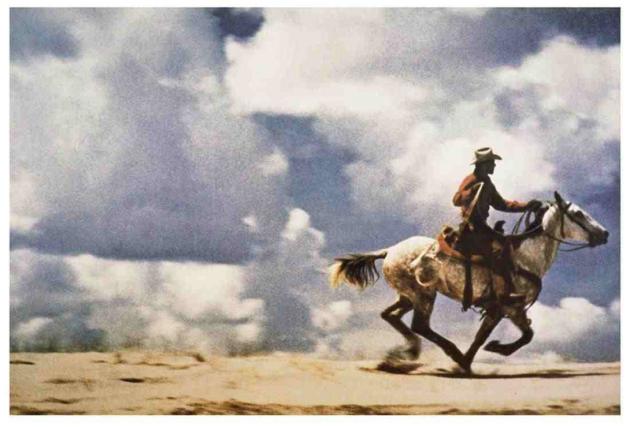Like Donald Judd, who famously housed his art in store-fronts around rural Marfa, Texas, Richard Prince has been reconfiguring his own surroundings for nearly two decades. The 65-year-old artist – who is well-known for his invention of ‘Re-Photography’ and the appropriation of images across American culture and pre-existing media – moved into a farmhouse over twenty years ago. It sits at the end of a winding and wooded lane in the Catskill Mountains, which is 200 miles north of New York City. The artist told friends at the time that he wanted to live and work there because no one would visit him. Now, finally, the appropriation artist is more willing to receive company.
Prince has steadily amassed nearly 300 acres around his farmhouse and studios in Rensselaerville, New York since 1996, for the purposes of which, after his own complexes – the artist will use to build a space for his Ryder Road Foundation. Prince will finalise details over the next five years, he told WJS. However the artist’s plan for the foundation is to show emerging artists that he admires, such as painter Genieve Figgis. As well as an insight into Prince’s own work being created in studio spaces nearby.
Over the decades that the artist has resided at the location, Prince has built or converted at least half a dozen buildings to suit his particular creative sensibilities. This includes a former bank where the artist now displays his rare-book library – the most important of which are not on display but housed in a vault – to a former hunting cabin whose exterior he has clad entirely in vinyl records. Inside Prince’s Vinyl House, the artist has fitted speakers to play loud music whenever anyone opens the door, the disco ball dangling overhead actually belonged to James Brown.
The grounds that surround Prince’s studio compound are also home to a number of large-scale sculptures that the artist has never exhibited before. These works include six totem-pole-like towers he created by impaling and suspending dozens of black rubber blasting mats, the kind used by highway construction crews to keep shards from detonated rocks in place.
Guggenheim curator Nancy Spector has described the towers as “existential” and “paradigm-shifting”. Prince’s compound also houses a hangar-like building – this is the artist’s “body shop” which contains a huge monster truck and other works in progress – a bronze cast of a gas tank painted iridescent green, a hubcap filled with stained glass; and of course the artist’s Muscle cars are a frequent sight.
“A lot of stuff here I don’t consider art, or at least it didn’t begin as art,” Prince says, steering his black Dodge Challenger around his compound on a rainy afternoon. “I’m just trying to make something I haven’t seen before. Cool stuff.” he told WSJ.com.
In fact over the many years that Prince has worked and resided at his Catskill compound; only a handful of friends and collectors have ever been invited to visit him in, so Prince’s decision to open his studio and outbuildings to the public is significant.
“Most people don’t realise what he’s been working on up there, but he never rests – he’s indefatigable,” says Harper Levine, a friend and rare-book seller in East Hampton, New York. “I think he’s thinking more about his legacy.” he stated to WJS
Larry Gagosian, Prince’s dealer, says the buildings are a reflection of the artist himself: “He’s not building these spaces to impress people; like his work, it’s organic. But he’s slowly and methodically creating this terrific cultural landscape”.
Whatever the ‘Re-photographer’ chooses to do at the location; and when he finally opens its doors, expect the art world to pay close attention.

